Toddler Sleep Remedies: 10 Solutions To Get Your Toddler To Sleep
We hope you like the products we recommend. Just so you are aware, Keep Toddlers Busy may collect a share of sales from the links on this page. Read more about our links in our disclosure policy.
–
–
Okay, so as a former mom zombie I want to talk about an important topic that seems to quickly start heated debates in any online mommy community. Sleep Training. Yes, I said it.
When I started experiencing a little sleep regression with my daughter at 9 months I decided to revisit baby and toddler sleep remedies and started doing research on some things I had forgotten. (I had not done any previous sleep training with this great sleeper but I sleep trained my son with a gentle approach at 15 months)
Sleep Solutions are A MUST
With two busy children, a husband, and an online business, my research often means searching google lol. But this time I took out the books and even talked to a few reputable people. This allowed me to really take some time to re-learn the ins and outs of sleep training.

So combined with my experience training two children and some extensive research, I decided to take on the challenge of a sleep method guide that covers it all. This is THE ultimate guide for baby and toddler sleep training methods. I have arranged the sleep methods starting with the most gentle and ending with the least gentle.
I believe that one of the best things that we can do for our children is to make sure everyone gets sleep, including both the parent and the child. (See what I did there? lol) I know I have handled many stressful situations better when I’m not running on fumes for such an extended period of time. So in other words, I don’t believe sleep training makes you a bad person.
We will cover every single sleep training method and I have outlined what you will be reading below.
So let’s do this. This post is for the new mother that happens to have an alert child, for the mother who’s first child slept well but the second is completely different, for the father who is trying to get a routine right for the best restorative sleep, and for all the caregivers that just NEED SLEEP.
–
–
Disclaimer: I am listing all methods without necessarily recommending a particular method, because, babies are different. The sleep shuffle method worked well for my children, but may not for others. Take a look and figure out what is best for you! But I do believe in helping children to sleep well at a young age and there is a lot of research about babies and sleep to support it.
–
10 Toddler Sleep Remedies
–
Here is what we will talk about in this article:
- Is It Really Time to Sleep Train?
- Your Baby’s Personality
- Eliminating Issues Prior to Sleep Training
- Night Weaning
- No Cry Sleep Method
- The Pick-Up, Put-down Method
- The Sleep Solution Method (Routine Rich)
- Sleep Shuffle Method
- Ferber Method (Cry-It- Out Modified)
- Extinction Method (Cry-It-Out)
- Sleep Regressions
- Bonus Tips
–
1. Is It Really Time to Sleep Train?
I think most of us can agree that being a mommy can be such a tough job on its own. That’s why it is so annoying to have to deal with unsolicited judgement and advice from others regarding when our babies or toddlers should or should not be sleeping through the night and how we should be facilitating the transition. This guide is for parents to be able to make their own decisions about when and how to start sleep training (if at all) based on all of the information that is available.
Is The Timing Right for Parents?
In other words, will you be able to handle some tears, or being a uncomfortable? This is where preference comes in. Some parents, especially the second or third time around, are able to handle hearing the cry of a 12 month old at night (whether they will be soothing them or letting them cry for a little is another topic), but they may not be okay with hearing the cry of a 5 month old in the middle of the night for more than a few minutes. What are you comfortable with?
Do you have the physical time?
Contrary to what many people seem to expect, sleep training can actually take some significant time. Whereas many parents would like to see better sleep in a few days, it can often take multiple weeks to see the desired effect. Taking that time at night for a couple of weeks or longer may need some extra thought if it will interfere during your daily routine and responsibilities.
Do you have support?
I can’t stress this enough. Find some support from anywhere that you can. Whether its a significant other who can take turns with you, or a family member, friend, consultant, or even an online community member that can just offer encouragement and accountability. Help can be sole difference in successfully sleep training your child.
Is it the Right Time for Baby?
Although sleep training can occur at anytime, there are windows that may produce better results. Take a look below at some of the great suggestions from the baby sleep site!
4-7 months (after the 4 month Regression)
This window may be one of the most optimal times to start sleep training for many reasons. For one, at four months your baby has moved out of the infant stage (some say closer to 3 months, I say 4). Infants develop the ability to self soothe between 4-6 months of age. Also, at this stage your baby is starting to develop more mature sleep patterns and they are hopefully getting through the 4 month sleep regression that many babies experience. In addition, at this young age unwanted sleep associations will be easier to break. Lastly, babies of this age group aren’t yet trying to jump out of the crib, or pulling up or sitting up whenever they don’t want to go to sleep.
The 11-16 month window (After the 8-10 month Regression)
This isn’t as ideal of a time to sleep coach as the 4-7 month window, but if you choose to bypass that one, this is the next one to try. Similarly, your baby is past the sleep regression that happens at 8-10 months.
Even when taking into account the occurrence of sleep regression (only one of my children had them) there is still no perfect time to sleep train. Some say not before 4 months and others say not before 6 months. I suggest talking to your baby’s pediatrician and get their thoughts based on the size and development of your baby, as well as temperament and eating habits.
–
2. Personality and Sleep
I actually enjoyed reading and did a review of The Sleep Lady’s Good Night, Sleep Tight. There was some great sleep training advice, in my opinion, and I actually ended up utilizing it successfully. Kim West provided a host of additional information that was valuable as well.
If you have an alert, strong willed, or spirited child, I can attest to the fact that personality may interfere with sleep patterns. Kim West offered great advice for these wondrous babies.
From The Sleep Lady: 4 Tips For the Alert Child
- Watch and take note of their schedule. An alert child may be able to play all day but may also become overstimulated and not able to settle down for a nap or bedtime. Time before bed should be more soothing. I actually have a play list that I turn on in the evenings to help calm my children.
- Ease them into sleep by sticking to a well-planned sleep routine for naps and bedtime.
- Baby massage could help your child relax for bedtime. There are many sources on the web that will provide tips and how-to’s.
- Keep the room cool, dark, and comfortable (soft sheets and clothes).
3. Eliminating Potential Issues (When Not to Sleep Train)
I thought I would touch on a list of things to tackle or at least address before starting with sleep training. My advice is not to sleep train before the following:
- Before age 4–6 months of age. (Depending on what methods and ideology you decide on)
- When you have visitors (especially those who may distract or overstimulate baby, judge, give unsolicited advice, or interfere)
- Right before a vacation
- When your child is suffering from a sickness or teething
- When your child is working on another developmental task such as potty training or learning to walk
- Immediately before or after a new sibling is born
- Too many outside distractions are present. Examples include a child sharing a room with a sibling. I would even recommend that the other child be moved to the parents’ room or another room for a week or two to facilitate training
- Switching baby to another room. (My personal opinion, but I would allow the child to get used to a new room before tackling sleep training if that’s the end goal.
–
4. Night Weaning
–
At 9 months when my daughter was waking during the night, her pediatrician asked me to consider giving my daughter water instead of milk. She explained to me that my daughter’s stomach would produce acids in preparation for the milk during the night if she is expecting milk during that time. She went on to say that as long as she was getting adequate calories during the day, she should not necessarily need food at night.
After 4 days of “night weaning” by giving water instead of milk, my daughter started sleeping through the night and WAKING UP HAPPY with no crying. (I did give her milk upon waking).
I guess this can almost be considered a form of sleep training, but the difference is that I did not “coach” her to learn how to sleep. Unlike my son, she was a little more natural at teaching herself to fall back asleep when she awoke throughout the night. I do want to mention that I do put my children down awake so I’m sure that helps the process. You will see putting down awake as a first step in almost all sleep training methods.
In my research, I have discovered that according to many pediatricians, authors, and scientists, many children don’t need calories at night after six months. Of course breastfeeding moms may still want to find some workable alternatives to keep supply up for daytime feedings, but many pediatricians give the okay to wean in this time-frame.
How to Encourage Less Night Feeding
Eliminate Discomfort
- This can include anything from teething, room temperature, allergies, reflux, other digestive problems, and any other illnesses. Watching for the cues and acting fast can make a huge difference while night weaning. You may even need to put weaning on hold for a bit.
- Maximize baby’s nursing during the day so that calorie intake requirement for the day is achieved before bedtime. This can included increasing feedings near bedtime and also dream feeding. With dream feeding, you will nurse or feed the baby right before YOU go to bed (even if baby has already gone to bed), so that you get a longer period of sleep before she wakes again. Be carefully not to allow the baby to fully awake. keep it dark and quiet.
- Substitute milk for other comforts. Just be sure not to introduce another sleep crutch. Examples include a soft back rub, getting the child a drink of water, and even sshhing or singing if it doesn’t stimulate your child.
Have your partner comfort your baby when she cries at night
Gradually Eliminate Feedings, One at a Time
Gently soothe and comfort your baby when she wakes to feed, and explain that it’s time to sleep, not eat. If you try to eliminate feedings and your baby cries inconsolably for several nights in a row, go back to your normal routine and try again in a week or two.
–
–
5. No Tears Method
–
Elizabeth Pantley discusses this method in her book titled The No-Cry Sleep Solution, and the  often quoted pediatrician, Dr. William Sears, devotes a chapter of The Baby Sleep Book to critiquing cry it out methods. Contrary to other’s opinions, these two, and many others like them, believe that cry it out techniques can give your child negative associations with bedtime and sleep and are not necessary.
often quoted pediatrician, Dr. William Sears, devotes a chapter of The Baby Sleep Book to critiquing cry it out methods. Contrary to other’s opinions, these two, and many others like them, believe that cry it out techniques can give your child negative associations with bedtime and sleep and are not necessary.
Sleep experts who support sleep training methods say it is not traumatic for babies to cry alone for short periods of time with frequent check-ins. And the end result is a well-rested, happier child. They say no tears sleep strategies may cause and over dependency on parental comforts, not allowing the ability for baby to learn to self soothe.
So this is where preference and gut feeling comes in. Many different reputable doctors just have differing opinions, so we can choose what we subscribe to based on our own research efforts.
Can My Baby Sleep Train Without Having to Cry?
Many moms just don’t like the idea of having their baby cry at night for any extra amount of time and that’s completely okay. Some may feel that there are better ways for sleep training without putting extra stress on the baby, or maybe they have tried a method involving crying and it just didn’t work. Some people, like me at various points, just don’t like hearing a crying baby lol.
The great thing is that every child is different and finding a method that works for your child is really all that matters.
Professional Tips for the No Cry Method
Bed Time On Early Side
Putting your baby or toddler down to sleep between 7-730 pm is an “ideal” hour for adequate rest. Ideal doesn’t mean the only good time, however. Although this time will and should be adjusted depending on many factors, such as how old they are or how much hey sleep, I do generally try to stick to this time frame. Use black-out curtains to help your children sleep longer and deeper as well.
Consistent Bedtime Routine
A bedtime routine allows the child to predict when bedtime is near and better prepare themselves for the transition. In the span of about 30 minutes, a bath, feeding, book, and song is a great practice to experience a more smooth transition to sleepy land.
Breast/Bottle Association
Make sure that baby doesn’t fall asleep on the breast or bottle. Any feedings should be at least 10 minutes before falling asleep. Just like adults, babies naturally wake up during the night and ideally should be able to get themselves back to sleep like we do. But if they fall asleep on the bottle or breast, ,it is more likely they will expect the same conditions when falling asleep again.
Stimulation During the Day
There is a delicate balance regarding stimulation. Especially for young babies, stimulation such as reading, tummy time, and outside play is needed for learning and development and can allow the child to become tired enough to sleep well. However, it can have an undesired effect on sleep if they are routinely being overstimulated (you can tell by crankiness) or stimulated just before bedtime.
Eating Schedule
Try to provide calories during the day, so that less calories are needed at night. Allowing babies to eat with minimum distractions and encouraging older babies to eat more solid and complex foods when the timing is right can have a great affect on night time hunger.
Temperature and Clothing Make sure your baby is not too hot or too cold.
Nap-time Hours
There is a rule that says “Never wake a sleeping baby”. Well, sometimes it may be necessary to promote great nighttime sleep. After reviewing how much sleep your baby should be getting due to age, make sure that your child’s naps are not so long that they interrupt nighttime sleep. I usually try to allow my children to get through at least two sleep cycles for most naps and then wake them, unless they have moved on to one nap, in that case they sleep for 2.5 hours. Also keep an eye on how close the afternoon nap is to the desired bedtime.
–
6. The Pick-Up-Put-Down Sleep Training Method
Pick Up, Put Down is introduced and discussed by Tracy Hogg in her book Secrets of the Baby  Whisperer: How to Calm, Connect and Communicate with your Baby. The starting age for this method of sleep training is about 4-8 months of age.
Whisperer: How to Calm, Connect and Communicate with your Baby. The starting age for this method of sleep training is about 4-8 months of age.
The Process
This gentle method is called the “middle of the road” by Tracey. Some may find the method confusing for the child but others have found that it’s a very viable sleep training method.
With this method, you go through your bedtime routine and lay your child down awake. If there is no fussing you leave the room. If you’re child begins to cry to a point that you are not comfortable with, you follow a stop and listen approach. If your child continues to get worked up, you return to the room and pick them up for a minute or two to settle them down and then lay them back down awake. You repeat this process until your child is settled and sleeping.
This process continues until your baby eventually goes to sleep, and that may take a while. So just be prepared for it with patience and understanding It can be a frustrating cycle for parents, and it’s very important that you are calm and quiet when you pick your baby up to comfort them.
Keep in mind that the cycle of picking up and putting down may be too stimulating for some babies. Instead of relaxing them, they find the process disruptive, which can have the adverse affect of working your baby up. So make sure to look out for cues.
A Few Tips for Success
- Ensure your child is on a great sleep routine and bedtime is age appropriate.
- Start with a soothing wind down routine and implement it before you begin the sleep training part.
- Make sure you as the parent are well-rested before you begin!
–
–
7. The Baby Sleep Solution
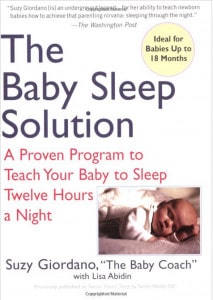 Lisa Abidin and Suzy Giordano talk about the baby sleep solution in The Baby Sleep Solution: A Proven Program to Teach Your Baby to Sleep Twelve Hours a Night.
Lisa Abidin and Suzy Giordano talk about the baby sleep solution in The Baby Sleep Solution: A Proven Program to Teach Your Baby to Sleep Twelve Hours a Night.The baby sleep solution focuses on spreading out and focusing on daytime feedings while teaching babies to fall asleep on their own and get themselves back to sleep when they awake. The author uses a method called the “limited crying solution” when necessary, which is also described as a middle ground between cry it out and no cry methods.
The goal is 12 hours of sleep at night starting at only a month old.
Baby Sleep Solution Method (once age, weight, and food requirements are met and approved by a pediatrician)
- Step one summarized is to work on extending feedings to every 4 hours during the 12 awake hours of your baby’s day.
- Once baby is eating every 4 hours during the day, you begin to work on dropping feeds at night, encouraging your baby to continue extending out the feedings. The less your baby eats at night, the more he will eat during the day.
- The next goal is having the baby sleep 12 hours at night, entertaining themselves if they wake earlier until you come to get them.
- After baby is sleeping through the night for 2 weeks (12 hours), you get ready work on naps.
Limited Cry Method (explained in detail Here)
- Do your pre-sleep routine and put baby in his crib awake.
- Baby starts to cry. Start the clock once he is crying continuously and is doing more than just a little whine. Stop the clock when he stops crying, even if it is just for a little bit. Restart the clock all over again when the crying starts again.
- Check on your baby after 3-5 minutes of continuous crying (5 minutes is the max time regardless of age). Go in sooner if you feel you need to (i.e. baby’s cries are extremely escalated).
- During this check you will intervene and reassure your baby. Offer a pacifier, offer a soft touch, offer a lovey, sing, shush-pat, change baby’s position, etc. If you speak, keep it at a whisper and avoid having a conversation with baby. Avoid eye contact or any sort of playing with baby.
- Once baby is calm, leave the room. Do not return for another 3-5 minutes following constant crying. Repeat as necessary.
–
8. “Sleep Shuffle” Method- (also a Form of “Fading”)
 I completed a great detailed synopsis and review of the Sleep Lady Good Night, Sleep Tight. Take a look here!
I completed a great detailed synopsis and review of the Sleep Lady Good Night, Sleep Tight. Take a look here!
The Sleep Shuffled is explained by Kim West in her book, Good Night, Sleep Tight: Gentle Proven Solutions to Help Your Child Sleep Well and Wake Happy.
What is The Shuffle?
Here is an excerpt about this method from the author:
“You don’t leave your child while he’s crying. Instead, you stay, offering verbal and even a little physical comfort while he teaches himself the skill of falling asleep. Humming, singing, murmuring and assuring the baby sends the message, I’m here with you.” (Kim West)
“Gradually, you move to a position further and further away, in increments and distances that are ultimately up to you. One day, you’ll find you can put baby down and walk away, having established in his mind you’re always there for him.” (Kim West)
She also gives advice on napping, and getting rid of sleep crutches as well.
–
SIDENOTE:
Baby Center noted there are two main ways of approaching the fading method that many associate with the shuffle: “camping out” and timed check-ins. For the camp out approach, the parent would simply sit with their child until they fall asleep (with the occasional pat or touch to comfort them.) After a few days, the parent would move further away, sitting until the child sleeps. Over time, the goal is to be able to lay your child down and walk out of the room while your while they asleep.
In the timed check-in approach, the parent would set an alarm, usually for around five minutes, and go in to comfort their child, repeating this until they sooth themselves to sleep. The parent would very slowly increase the amount of time they’re away, until the child doesn’t fuss at all and goes right to sleep.
Be Your Child’s Sleep Coach
Kim West uses the term ‘sleep coach’ because she believes that parents should act as sleep coaches for their children, giving them positive examples and lots of chances to figure it out, rather than stepping in and doing it for them.
When To Start
Be sure your baby is very well-napped for a few days before beginning the process. Start by training your baby at bed-time, not nap-time.
Stick With It
As long as you are consistent in your sleep coaching, your child will learn how to fall asleep without the rocking, patting, feeding, or other crutches that you’ve been using. And then your whole family can finally get some much needed sleep!
–
9. Ferber Method
Pediatrician Richard Ferber is the founder of the Center for Pediatric Sleep Disorders at Children’s 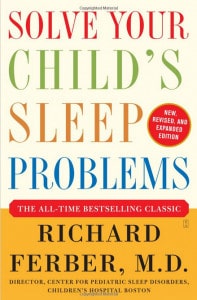 Hospital (Boston). Since the publication of his book Solve Your Child’s Sleep Problems in 1985, he’s become basically a household name and is known as a leading (and controversial) expert on children’s sleep.
Hospital (Boston). Since the publication of his book Solve Your Child’s Sleep Problems in 1985, he’s become basically a household name and is known as a leading (and controversial) expert on children’s sleep.
You have probably heard of “Ferberizing” before. It’s basically a method of teaching babies to soothe themselves to sleep that is referred to by many as cry-it-out. This method has many variations.
There are many parents, pediatricians, and followers who swear by the Ferber method, while others claim that it is damaging to children and unnecessary.
There is an updated and version of Solve Your Child’s Sleep Problems that was published in 2006.
The Process
With the Ferber method you gradually teach your child how to fall asleep without assistance through incremental check-ins. Over time, you increase the amount of time between checking in with your baby. This allows them time to practice falling asleep many times in the span of a night without your initial interference.
The Details
The first step is your baby or toddler initially falling asleep on their own. You start by laying your child down “drowsy but awake” at bedtime, and then you leave the room. If your child starts to cry you are permitted to check in and offer your quick comfort (no bottle), but you are not to comfort them to sleep.
You then begin to gradually increase the time between your checks in over the next few nights so that your child has more time to fall asleep on their own.
Some claim to never even make it past the first couple of days because their child quickly caught on. Others say that the method never seemed to kick in, or just took too long.
Here is an Example of Check-In Times From the Book
- Day 1 – 3 min (1st interval); 5 min (2nd interval); 10 min (3rd interval); 10 min (remaining intervals)
- Day 2 – 5 min; 10 min; 12 min; 12 min
- Day 3 – 10 min; 12 min; 15 min; 15 min
- Day 4 – 12 min; 15 min; 17 min; 17 min
- Day 5 – 15 min; 17 min; 20 min; 20 min
- Day 6 – 17 min; 20 min; 25 min; 25 min
- Day 7 – 20 min; 25 min; 30 min; 30 min
–
10. Extinction Method
This is understandably the most controversial, and for many, unimaginable method of sleep training. It involves putting the baby down awake and then mommy and daddy are gone until the morning. Introduced in the ’80s, this approach achieves results within a few days to a week but the drawback is obviously, the crying and a sense of abandonment. This method seems harsh and unnecessary for most and is often used as a last resort. Other more gentle methods of “extinction” are often utilized instead.
11. Sleep Regression
–
Sleep regression is something that most babies experience at some point. It is usually a momentary lapse in their normal sleeping pattern. Your baby may have been previously sleeping well and then suddenly their sleep takes a turn for the worse. These regressions are usually caused by developmental milestones, but your child can also experience a sleep regression due to being sick, teething, vacations or travel, daylight savings time, and even having exciting visitors during the holidays.
They can last anywhere from a couple of weeks to over a month, with the major regressions usually occurring around 4 months, 8-10 months, and 18 months. Each child is different, however, and may experience only some of the regressions or none at all.
If you are able to help your child master great sleeping habits, hopefully regressions will be short lived.
So What is Happening During these Regressions?
4 Month Regression– During this time your child may be experiencing increased brain development and a growth spurt. He or she may also start to wake more easily when you put her down and even start a new milestone of rolling in the crib. All of this can have an affect on previously great sleepers.
8-10 Month Regression– This regression should not last as long as the four month regression. It usually coincides with your baby to pull herself up to stand, scoot, crawl, and even start to talk. Helping them learn how to sit back down when standing or getting in the crawling position will help to shorten this regression if applicable. This is also an age that children start to experience separation anxiety.
18 months- Increased language and awareness development may cause temporary regression
How To Handle Regressions
The one thing that I always tried to prevent was allowing a sleep regression to turn into habit, or normal sleep behaviors. Believe me it happens. If you find yourself in the midst of a sleep regression, do your best to be responsive while not revisiting any past sleep crutches. Remember that this should be temporary and your child needs support but also good decisions.
Surviving Sleep Regression
Check for Sickness or Other Issues
Health for our children is always number 1. You don’t want to assume that it’s a sleep regression just because of age.
Focus During the Day
Give your child ample time to work on developing skills during the day so they can get back to sleeping at night!
Keep Your Routine
Try your best to stick to the routine you currently use, i.e. your pre-bedtime routine. Predictability always goes a long way. During regressions you will need to deviate from your overnight routine to respond to your child’s needs during a sometimes difficult time for them so familiarity in other areas is your friend.
Your baby will need comforting and love during this time.
Wait. It. Out
I know it’s a tough one but all you can really do is get through it! This too shall pass.
–
12. Bonus – My Absolute Favorite White Noise Video and Noise Machine
I love to use this when I am not able to get to my kid’s usual sound machine. I play it as loud as it can go, but just make sure you get through the ad at the beginning and play through it before you put your child down lol. The White noise cuts out all of the extra noise near the kid’s sleeping area and it seems to help them sooth themselves better during sleeping hours.
–
My #1 White Noise Sleep Machine! Check out the video on its features and benefits here!
So tell me parents and caregivers, what do you think about sleep training and toddler sleep remedies?? Yay or Nay. Do you have any tips to add of your own? Please let me know in the comment section below if you do. Also, don’t forget to sign up for my newsletter on the right side of this page to get all of my updates and also 2 free milestone e-books!

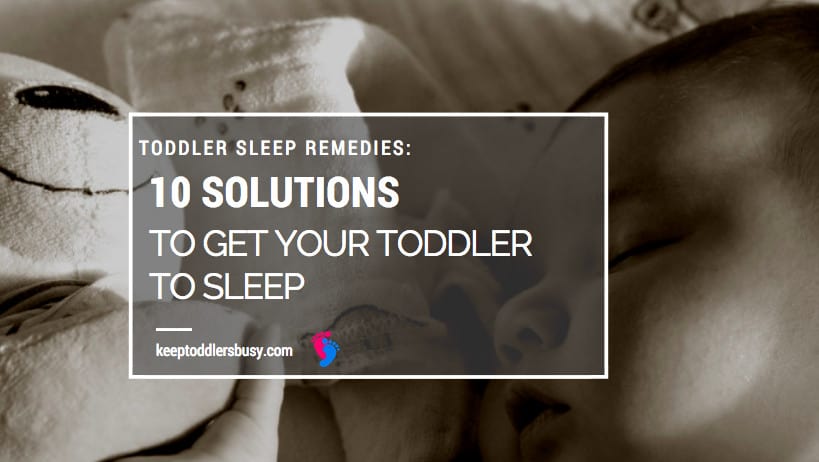
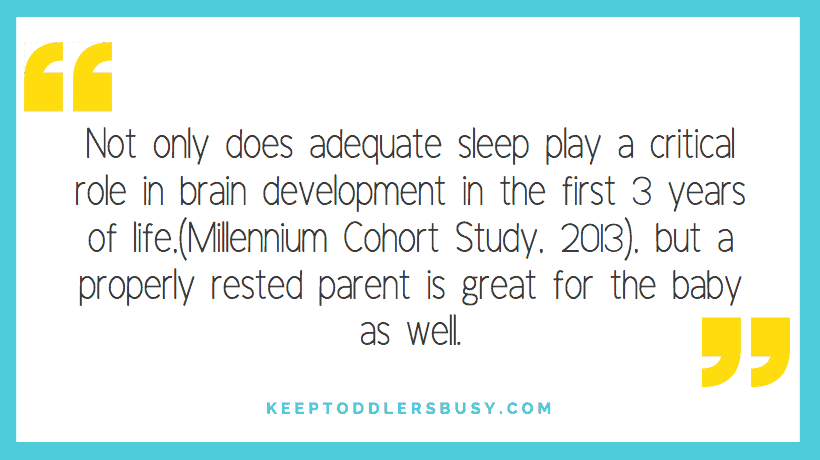

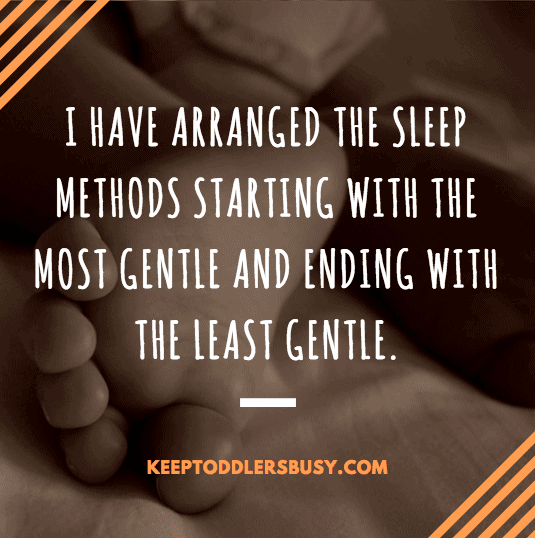
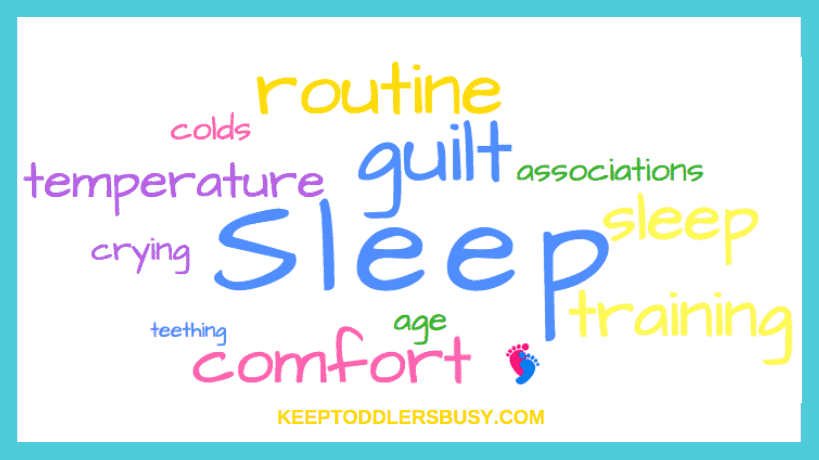
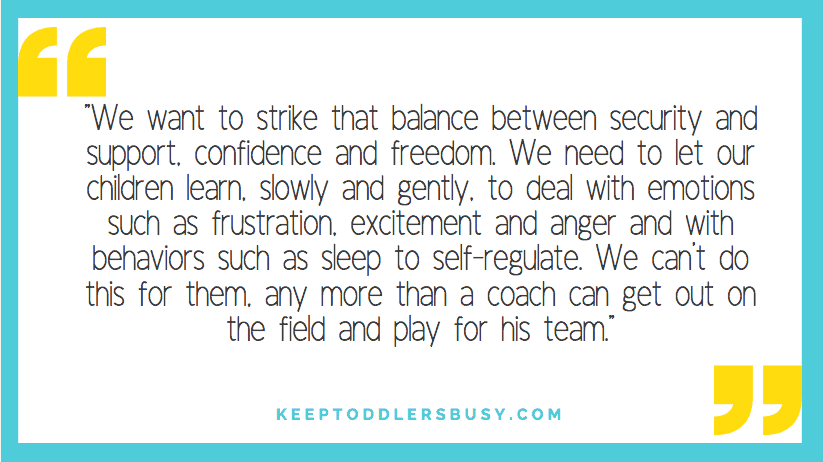
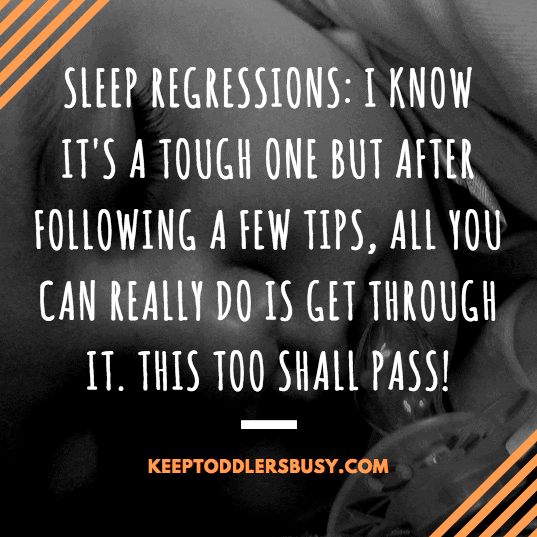

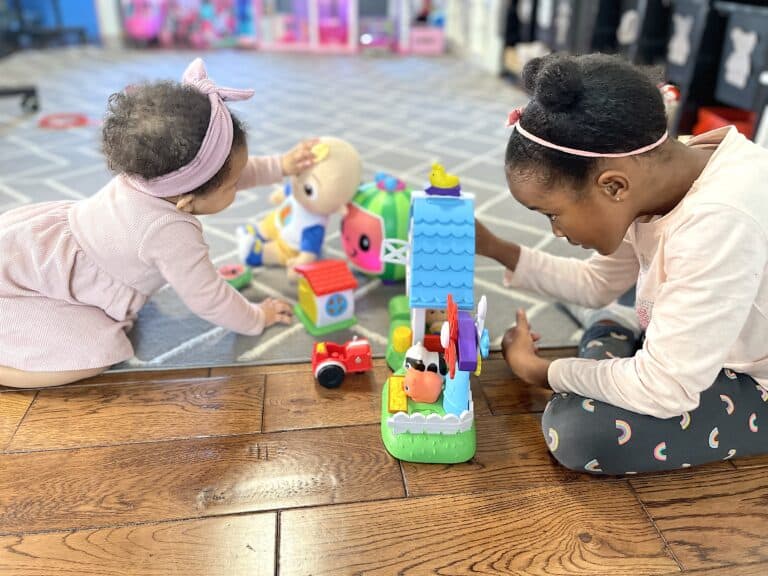
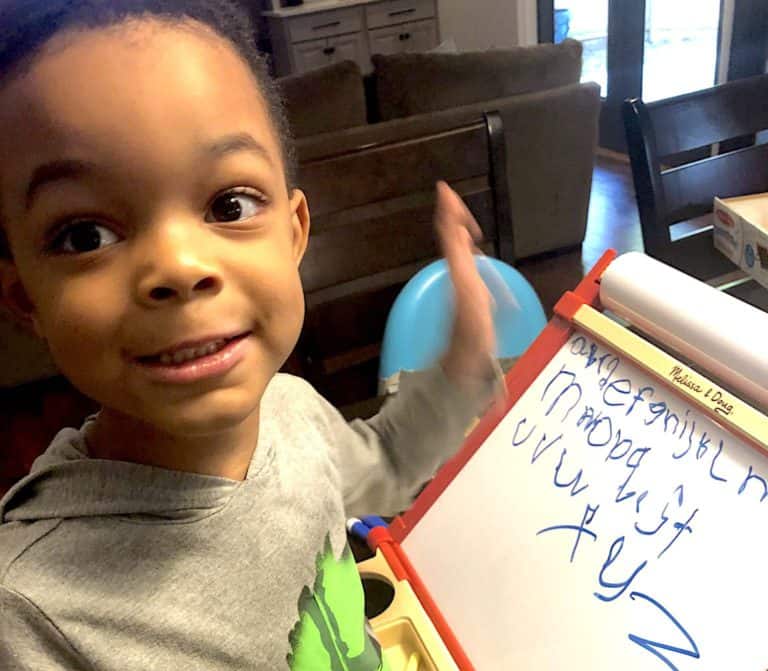

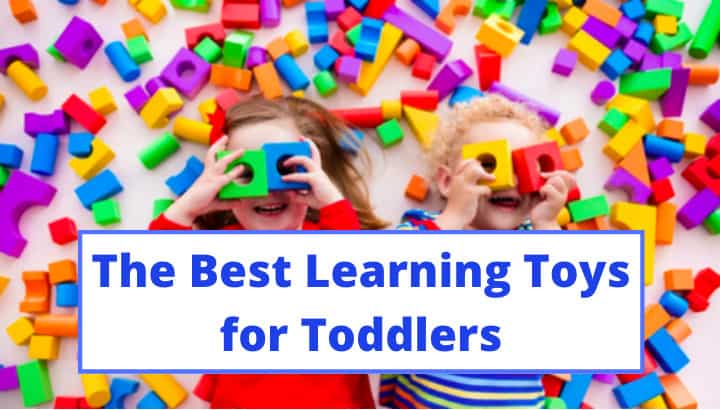


Great article, I suffered two year until my toddler would sleep through the night. I joined every sleep site and paid for a lot of sleep counselling and I’m glad you have shared this information for free. I tried the no tears method and the brutal cry method ( which was so painful to my heart, but really worked for us). Every few months we had to re-sleep train, due to teething or some kind of regression. It felt like every time something started to work, my son caught on and regressed. In the end we had to take him off milk, and use almond coconut milk, because he seemed to have upset tummy. Another thing that worked like magic was giving him a warm bowl of plain oats with banana half hour before bed. This helped with his VERY restless leg syndrome, and gave him enough iron to settle his muscles. Every baby is so different, I never had sleep issues with my first, so having my second baby was so incredibly different and very challenging. There are so many different ways to try sleep training, and every child will be different.
Thank you for this comment Linsey. Sleep issues and regression is something that so many people with children go through on a daily basis, yet not everyone talks about it. I am sooo glad that you ended up finding a method that works for you, because like you said, all babies are unique and not everything works for every baby.
And sleep regression can be so disheartening. Some of the remedies you talked about are great and I may add something to address those to this article!
I appreciate the fact that you don’t say there is one best method and everyone should follow it. Having a catalog of methods is much more helpful.
I agree that external support is so very important. It can really lessen the stress and pressure.
Our only child is now about 21 and I honestly don’t remember what method we used. She sure was an active baby and one that demanded constant attention for the first few years. Fortunately, my wife was able to stay home with the baby.
I support out method was to give the baby what she wants when she wants it. That was pretty stressful.
Thank you Peter. Everybody is different so I will never try to say that my way is always going to be the best way! Yup I agree. Being on demand while they are infants is stressful enough. Being on demand for years is just waay too much lol.
This is a very thorough and lovingly-written article with some great tips for new moms who need a bit of help. I fostered the adopted two children and they came to me aged 4 and 6 with a lot of issues around being left alone. I found I had to sing them to sleep for the first 3 months and then I used the fading method to gradually move further and further away. It took a long time but worked eventually but then my lovely girls did have a few more issues then most.
We used to also have a calm down routine before bed, watching a Baby TV channel as this was recommended because they had missed out on the attachments made to main carers when they were smaller, so we basically had to regress them and make up for these lost emotional keys.
I think the point here is that, as you say, each child and the anxieties and situations will be different and learning to understand this will help you when sleep training your child.
Thank you for these thoughtful tips.
Gail
Wow Gail. I really commend you for adopting and also taking the time to help your children learn to trust and sleep well. The other tips and methods you used were awesome. Your story just really warmed my heart honestly.
Fostering and adoption has always been something that I have considered in my head and I still do.
And yes the key is definitely tailoring your sleep solutions to what is best for the baby.
Just from your post I know that you are a wonderful loving mom and you will be rewarded for that!
Thank you for commenting!
My moms friend is doing sleep training with her baby. She is using the up for 30 minuets back down to sleep.
I don’t think I would follow a particular type of sleep training if I have kids. I believe that the baby needs to be held for psycilogical reasons, but at the same time depending on the age they can cry it out. Once they are 1 year old for example.
When a baby cries they need something, food, they are uncomfortable, need a change, etc… I think I would do what works for both me and the baby. I would probably look at ideas in further detail to help for sleep ideas, but the idea of sleep training seems odd to me.
whatever her choice is, I wish her luck! I do believe that babies cry for a reason, especially as younger babies. I also believe they can learn to form habits that may not be the best for them as well. But all in all the decision is on the parents and also on how feasible it is fo the household to continue waking through the night 🙂
Hi Kayla,
Thanks so much for sharing a great article, I’m a grandmother of a new born baby girl.
I found your article so helpful with great information about this topic, I read it and now I will share it to my son and my daughter in law, I’m sure they will love to read it too.
It’s always good to find great information to help us to make our lives better and it will be easier for them at the going to bed time as the baby grows.
Oh congratulations! That’s wonderful. I do think it could really help and I hope they enjoy the article!
Excellent Post. As a father, grandfather and now great grandfather. I wish I had of known all this years ago. But it’s never to late to learn. Thank you for your wonderful site.
Thank you so much Jum. That means a lot to me! And you are 100% correct. It is never to late. If you grandchildren need any help at all please send them right here!
Oh my goodness! I had no idea there were so many ways to sleep train a baby! I’m not a mom, but I used to babysit my nieces while my sister was at work and I remember my sister always reminding me not to let the girls fall asleep. This way, when they got home they would be ready for bed. Very informative read!
Yes Aria! And that is ABSOLUTELY the golden rule!! Lol. I remember I took my son to a gym play area while I worked out one time. I came back and the staff had my son in her arms sleeping. I was like “Nooooooo! They are supposed to be playing” lol (in my head). When the time comes for you make sure you check back at the this site!
Giving water instead of milk at night is an very old midwife and nurses remedy! Good for spelling it out these days.
When I was in Queensland 40 odd years ago, my friends babies were treated like this and all of them were sleeping all night within a week.
Of course some babies need breast feeding for health reasons but for most others this worked.
Helen, thank you for saying that! Of course I totally agree. You know I’ve actually gotten some flack for saying it. I know we should feed babies when they are hungry but they don’t need to eat at night after a certain age for most babies anyways 🙂
Kayla, I wish I had come across your advice when my son was a baby. Mind you, this was 18 years ago, when internet, blogging and social media didn’t really exist #lol. Anyhow, my son has always been a good sleeper, but I do remember him going through the ‘regression’ times. I’m not sure, but my feeling is that I used a little bit of all of the above methods, going along with the flow, up until when I had to go back to work. But even then, he adjusted to more tight routines quite well, I have to say. I do miss those times, and I love these times of having a nearly grown up child 🙂
Thank you ever so much for your advice. I really hope many mums to be will read your articles!
Awww those days really go by so fast don’t they Giulia? You really hit the nail on the head with your comment. My hopes is that someone can not only pick and choose what method they want to use, but they can also combine methods and at the end of the day just use what works for them and the baby or toddler. You are so very welcome!
I’m so glad I found this site! I’ve never seen all of the sleep methods outlined so well- and all in one place. (this exhausted mama thanks you for all the help). My first was a terrible sleeper and I could have tried so many other things- all I knew about were the Cry it Out Method (which wasn’t an option in this house) and rocking my sweet guy for hours at a time. I didn’t realize there were so many other choices! My third little guy is 7 months old now and I’m trying to find ways to help him sleep through the night. I think I’ll start with the gentle approach you outlined and break that ‘don’t wake a sleeping baby’ rule so that his naps are shorter during the day. Fingers crossed this works- but I’m bookmarking this page so I can come back for more suggestions even if that one doesn’t work for us. Thanks!!!!
Becky I am sooo glad that you found what you needed! That is the reason why I take the time to write this blog! I know exactly how it feels to be sleep deprived and looking for solutions quick and in a hurry. My first was the terrible sleeper and my second did much better, but I think I actually helped this time lol. I would love to have you back, please let me know how it goes. 🙂
I truly learned a lot from your post on toddlers sleep remedies, I loved how you provided so many awesome tips for parents and the products are extremely helpful as well. This post is a great resource for new parents with toddlers and even grandparents, I am going to recommend your website to all my friends with toddlers.
Jeff
Jeff, I’m so glad that you were able to get some great nuggets with this post! I world really hard to make sure it was a resource to those who may need the information. And thank you for the recommendation! I really appreciate any shares of that sort because it really helps get my articles out to more people. Thanks and have a great day!
Great post! I faced similar issue with my daughter. Had lot of sleepless nights. As you mentioned parents have to be “sleep coach” to train kids and practice sleep routine.
Thank you! Yup totally agree!